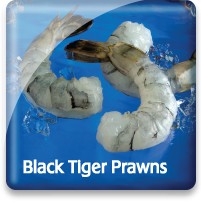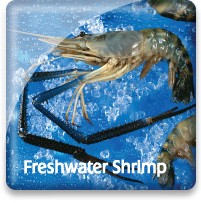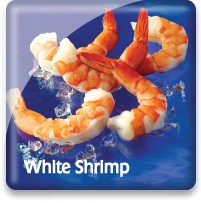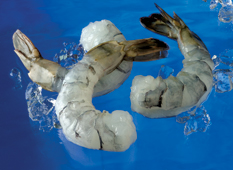
Black Tiger Prawns

Market Name: Eating QualitiesQuality Black Tiger Prawns should have a crisp bite or snap and a pleasant shrimp taste. There should be no musty aftertaste. Black Tiger Prawns can be seasoned and used in an infinite variety of preparations.
Giant tiger prawn is the largest cultivated species of shrimp, reaching 36 cm in length.
|
Description & CharacteristicsConsidered the “King of Shrimp” by many, Black Tigers are the choice to make when presentation counts. Known to reach sizes of close to a pound these shrimp, when cooked, become bright orange color. Farm-raised in the Far East, Penaeus monodon, have the firm texture chefs’ demand for customer pleasing dishes. Penaeus monodon is commonly referred to as black tiger shrimp, black tiger prawn, or giant tiger shrimp. The natural range of this shrimp is vast: from the east coast of Africa, throughout the Indian Ocean, and in South Asia to northern Australia. P. monodon is the largest of the Penaeid or tropical shrimp capable of reaching a length of over a foot. Black tiger or giant tiger shrimp are named for their large size and striped tails. Traditional farming of black tiger shrimp has been practiced for centuries by capturing wild shrimp and growing them in ponds, sometimes with other fish such as milkfish. Today the life cycle of black tiger shrimp has been closed, and much of the seedstock is now hatchery grown.Modern farming of Black Tiger Prawns began in Taiwan in the mid-1980s, and production in that country soared. In 1988, a virus swept through the farms, and the shrimp farming industry collapsed. The center of Black Tiger Prawns farming then moved to Thailand. Thailand became the largest producer of black tiger shrimp, and Indonesia had also developed significant production. During the 1990s, India and the Philippines developed successful black tiger shrimp farming, although Philippine production has since dwindled. In 2001, Vietnam exploded on the scene. Today, Vietnam and India are the largest producers of Black Tiger Prawns. Of course, Thailand and Indonesia still have some production of Black Tiger Prawns, but much of those countries’ production is now Litopenaeus vannamei. There are also farmed black tigers from many other countries including Malaysia, Bangladesh, and Sri Lanka. Black Tiger Prawns held the largest share of farmed shrimp production at their peak in 2001. Since that time, production of black tigers has been increasingly replaced by white shrimp. Currently, only 15-20% of all farmed shrimp consist of black tiger prawns. Black Tiger Prawns dominate the market for large farmed shrimp. Count sizes for shell-on headless shrimp typically are 26-30 count and larger, centering on 16-20 count. The production season is year-round with heaviest yields from May through November. Japan has always been a large market for Black Tiger Prawns, but as production increased and prices came down, the U.S market also became a major consumer.
Other Resources
|
Handling Instructions for Black Tiger Prawns
Frozen black tiger prawns should be stored at or below 0°F (-18°C) and then thawed properly when ready to cook from the raw state or to consume as a thawed precooked product. The frozen shelf life of IQF prawns is 18 months and 24 months for block frozen. Links to proper seafood handling instructions: NOAA - Fish Watch: Handling Seafood and A Consumer Guide to Safe Seafood Handling.
Thawing Black Tiger Prawns
Black tiger prawns and shrimp in general should be quickly thawed by removing them from their package and placing them in a colander and running them under cold water until thawed. This method can be used with both IQF and block frozen. IQF prawns thaw in just a few minutes while block frozen may take as long as 10 to 15 minutes. This method results in a high quality thawed prawn that is immediately ready for cooking or for eating in the case of an already cooked product.
Upon thawing, gently rinse with cold clean water. Raw prawns that are cooked immediately after proper thawing will yield the best quality. If the black tiger prawns are precooked, the best quality will
likewise be evident immediately after proper thawing. Prawns that are not consumed promptly after thawing need to be refrigerated between 33 and 39°F and consumed within 2-3 days.
Important Instructions for Black Tiger Prawns
The Federal Food, Drug and Cosmetic Act now requires that all foods that are not raw agricultural commodities and that contain a major food allergen be labeled to clearly identify the name of the food source form which the allergen is derived. (21 CFR U.S.C. 343(w)(1)). The act defines eight foods, and any ingredients derived from these foods as major food allergens: Fish, Crustacean Shellfish, Milk, Eggs, Tree Nuts, Peanuts, Wheat & Soybeans. The name of the food source that must be listed on the label for fish or crustacean shellfish must be the specific type of fish or crustacean shellfish. The market names of species of fish and crustacean shellfish should be used to identify the food source of these two major food allergens. If you intend to re-pack these seafood products, be sure the allergen is declared in either one of two ways:
1) Within the list of ingredients
or
2) In a separate “Contains” statement immediately after or adjacent to the list of ingredients.
Consult the Fish and Fishery Products Hazards and Controls Guidance, Fourth Edition, Chapter 19 for more detailed information on the labeling of food allergens.
Cooking Tips
Black tiger prawns and shrimp in general can be cooked and presented in a variety of different culinary methods from boiling to barbecue and everything in-between. It is truly a multipurpose wonderfully healthy seafood that can brighten up a special celebration and also be served at regular meals throughout the week for the entire family. It is no wonder that shrimp are America’s most popular seafood. Links to cooking tips and recipe ideas: Links to cooking tips for shrimp and recipes ideas.
The Philippines
The Republic of the Philippines is actually an archipelago, or group of islands set in the middle of the Pacific Ocean and the South China Sea. Roughly the size of Italy, this island nation boasts more than 10,849 miles. Its fishery is divided into marine, inland, and aquaculture.
Commercial species include scad, tuna (yellowfin and skipjack), mackerel, anchovies, sardines, squid, and blue crab. Aquaculture originally started in the Philippines with the cultivation of “Milkfish” – which took place in brackish water ponds originally, extending later to net cages floating in both fresh water and marine environments.
Shrimp is another major product of the Philippines, starting with Black Tiger prawns, largely exported to Japan. Shrimp underwent a “boom and bust” cycle, because of disease problems that led to a decline in production.
Today, finfish is becoming a popular aquaculture species, particularly Tilapia, some carp; seaweed, oysters and mussels.
Indonesia
The country we refer to as Indonesia is actually an Archipelago of some 17,508 islands and a coastline that encompasses more than 50,000 miles. Within the waters of the Indonesian archipelago, the government has established an “archipelagic country,” retaining exclusive control over these waters. Because of Indonesia’s access to the marine environment, it has vast potential for the development of aquaculture, particularly brackish water shrimp culture. In fact, in an attempt to prevent over-exploitation of the wild fishery resource, the government of Indonesia has established a formal policy to encourage aquaculture development. Mariculture products include various finfish, shellfish, seaweeds, species such as sea cucumber, grouper and seaweed.
Tuna is also an important export product of Indonesia.
Vietnam
With a coastline of 2,140 miles, as well as numerous rivers and lakes, Vietnam has had a long tradition of fishing and a culinary tradition that includes finfish, shellfish, and molluscan shellfish.
Bordering China in the far North, and Laos and Cambodia in the middle and Southern regions, the country—known officially as the Socialist Republic of Vietnam—is divided into 58 provinces, and includes several major sea ports.
With seafood production surpassing USD $6 billion in 2012, seafood—both cultured and wild—represents an important export for this developing country.
Major seafood exports from Vietnam include cultured and wild shrimp: Black Tiger prawns and Penaeus vannamei are grown in Southeast Vietnam, and small white and pink shrimp are still commercially caught in the South China Sea off the southern coast.
In addition, Vietnam is becoming known for its high-tech seafood processing industry, adding value to commercially harvested and farmed fish and seafood.
Species that are commercially caught include Grouper, Red Snapper, Red Mullet, Tuna, Swordfish, and Barramundi—which are the major species that are exported to Australia, the United States, and the EU. Vietnam is also a major producer of farmed Tilapia, and two species of Pangisius (boucourti and hypothalamus). Squid and octopus, as well as various species of lobster and crab and molluscan shellfish are also major export products as well as products consumed in-country.
Thailand
With more than 1,550 miles of coastline, Thailand—officially, the Kingdom of Thailand—has become one of the world’s leading seafood suppliers. Primary seafood products from Thailand include cultured (farmed) shrimp sold in various value-added forms as well as canned seafood—predominantly tuna.
With a focus on constant improvement of shrimp farming techniques to reduce impacts on the environment, as well as the development of new, value-added products, Thailand has emerged over the years as one of the leaders in this beloved seafood category.
In the tuna category, Thailand is a major global producer of canned tuna, much of it caught by vessels from other countries that bring it, frozen, to Thailand to be canned.
India
The most populous democracy in the world, India has 1.2 billion people living in an area that is the world’s seventh-largest land mass. Bordering the countries of Pakistan, China, Nepal, Bhutan, Burma, and Bangladesh, India includes breathtakingly beautiful mountainous regions, plains, rivers (such as the legendary Ganges River), and valleys—and a coastline of 4,700 miles.
Within Indian marine waters, commercial species such as mackerel, sardines, shark, perch, tuna, shrimp, and cuttlefish are some of the main species harvested. Freshwater fish include carp and catfish and there are several species of brackish water fish.
India’s Exclusive Economic Zone (EEZ) encompasses more than 2 million square kilometer, so there is a huge potential within India, provided that the fishery is managed to thwart overexploitation of the resource.
Top export items from India include frozen shrimp (the dominant seafood export), and frozen lobster tails, to name a few.
Bangladesh
Located between India, the Bay of Bengal, and Burma, Bangladesh (also known as the People’s Republic of Bangladesh) is a low-lying country roughly the size of Iowa that is prone to extremes in climate—from drought to monsoons, with cyclones a regular occurrence. With as much as one-third of the country flooding every year during monsoon season, the country has been slow to develop and poverty continues to be a problem for the country.
However, international development agencies, governments, and NGOs have been making big strides in developing a viable aquaculture sector in Bangladesh. Finfish and shrimp are farmed in inland open waters, brackish waters, and the marine environment.
Although Bangladesh has a coastline of only 360 miles, it has extensive ponds, lakes, canals, rivers, and estuaries that total 4.6 million hectares. These water resources that can be, and are, used to cultivate seafood—primarily shrimp and some finfish species—for export. Fish and fishery products are, according to the United Nations Food and Agriculture Organization (FAO), the country’s third largest export commodity product. Farmed shrimp remains the most important seafood export. Today 75 percent of the shrimp exports from Bangladesh are farmed; 25 percent are wild. Other species that are exported are eels, crab, and some tilapia.
As a strategy to end poverty, Bangladesh today is working with international bodies to improve production techniques, conserve resources and species biodiversity, and develop a modern infrastructure for processing, marketing, and financing the industry.
Go Blue! Seafood Sustainability Spectrum*Click here for an explanation of our Sustainability Spectrum 
Sustainability AssessmentEven though Black Tiger Prawn farming has lost its prominence, it was the initial driving force in establishing worldwide commercial shrimp aquaculture back in early 1980. Currently, over 85% of the Black Tiger Shrimp production has been replaced with the more efficiently raised white shrimp (Litopenaeus vannamei). However, Black Tiger Shrimp farming helped reveal negative environmental and animal health impacts that were the result of poor aquaculture practices and poor site selection. These lessons learned helped stimulate an ongoing improvement process that we see today across all worldwide warmwater shrimp aquaculture. All shrimp can be farmed responsibly to become more sustainable; however, some farming operations in South and Southeast Asia still need further improvement to meet this goal. Black Tiger Prawn farming ranges from traditional low input small artisanal family farms to the more industrial, high-input practices. Historically both of these approaches have had severe environmental impacts including mangrove loss, shrimp disease, and impacts on biodiversity resulting from the collection of baby shrimp from the wild to use for farming. Mangrove habitats that were converted to shrimp ponds during the rapid growth (gold rush) years in the early 1980s were later found to be poor sites for aquaculture, and were abandoned. Today many countries prohibit mangrove forest destruction and are actively reforesting mangroves at abandoned pond sites. Recent trends are to site more intensive (high input) farms on higher grounds that are far away from mangrove forests. However, these more industrial shrimp farms can add additional problems including pollution, misuse of chemicals, overuse of marine resources in feed, salinization of freshwater, and increasing stock stresses that can encourage the emergence of novel diseases such as Early Mortality Syndrome (EMS) and EHP.Today, there is now more of a universal adherence to established best aquaculture practices as well as new practices such as using feed and both broodstock and nursery stocks that are disease free or resistant, maintaining cleaner pond bottoms, monitoring water quality in terms of striving for a healthy microbial balance that discourages the emergence of pathogenic opportunists, and implementing polyculture schemes using finfish species such as tilapia that complement water quality maintenance. These advances and others have greatly reduced the negative environmental impacts associated with shrimp aquaculture in terms of protecting the surrounding ecosystems from farm effluents and conserving their productive natural resources that are used as farm inputs. In addition, the growth in sustainable aquaculture certification schemes such as BAP, ASC, and GlobalG.A.P. have collectively helped drive these and other best practices toward greatly improving the environmental and socioeconomic sustainability of shrimp farming. The Monterey Bay Aquarium Seafood Watch program lists farmed Black Tiger Prawns as a "good alternative" when they are raised on farms that have achieved Global Aquaculture Alliance 2, 3, & 4 star BAP certification or the Aquaculture Stewardship Council (ASC) certification. The mangrove forest based extensive farming of Black Tiger Prawns adhering to the Silvofishery® method has achieved "Best Choice" from Seafood Watch. Shrimp recirculating aquaculture systems (RAS) in which the water and wastes are continuously filtered and recycled in order to conserve on inputs and nearly eliminate the effluents are seeing steady technological advancements and offer great promise for making shrimp aquaculture even more sustainable in the years to come. These RAS systems could be located nearer to markets around the world and hence help reduce the carbon footprint associated with transporting to markets.
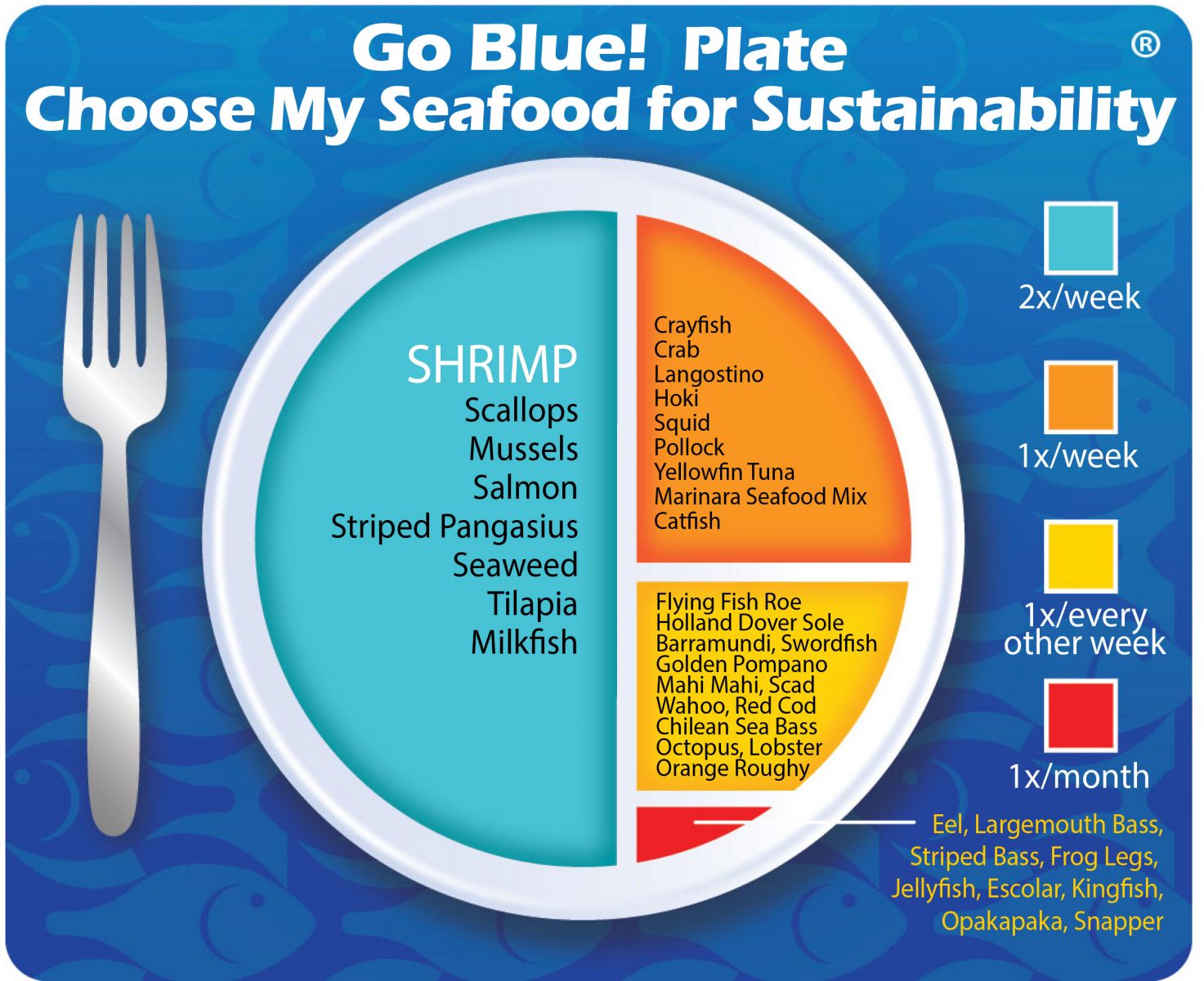
Environmental Impact: Low to Moderately HighGlobally, shrimp farming has rapidly expanded, but all too often this expansion has occurred without effective environmental safeguards. The conversion of ecologically important mangrove forests has received much attention, but other impacts including disease, salinization of freshwater resources, overuse of marine resources for feed, and pollution have also occurred.
Sustainability Improvements NeededCollectively, farms need to improve practices, mitigate historical impacts, and use resources more responsibly. Commercially-available, disease-free, domesticated broodstock are needed on a universal basis.
Actions that Sea Port is UndertakingSea Port is increasingly sourcing from Black Tiger Prawn farms that have achieved BAP (Best Aquaculture Practices) 2, 3, & 4 star certifications and from farms that are moving toward similar sustainability certification schemes. Sea Port also sources from smaller artisanal family shrimp farmers and by doing so economically helps improve their lives enabling them to move forward to improve their farming practices. Sea Port is a Governing Member of the Global Aquaculture Alliance and as such has helped support the advancement of sustainable shrimp aquaculture on a worldwide basis and as a member of the NFI Shrimp Council has promoted the consumption of responsibly farmed shrimp as part of a diverse seafood diet (shrimp is the #1 consumed seafood in the U.S.). Sea Port believes that, in aggregate, choosing from a diverse variety of seafood is better for sustaining the world’s seafood resources and that Farmed Black Tiger Prawns should be a part of this variety. We created the sustainability assessments for each of our seafood items in order to reveal the existing and potential environmental impacts and risks that are associated with producing them for human consumption. This allowed us to establish the starting position for each of our seafood items along our progressive Go Blue! Seafood Sustainability Spectrum®. These assessments are only a single snapshot in time and because of this, we will continue to assess and update the critical sustainability needs associated with our supply sources and issue updates to the Go Blue! Seafood Sustainability Spectrum® as needed. There is a growing global awareness for the need to assure the sustainability of farmed and wild caught seafood and because of this; all around the world positive changes are rapidly occurring at all levels of the seafood supply chain. We will continue to spread this growing awareness and work with our many industry partners to improve the sustainability of all seafood, which we believe is the ideal protein of choice to feed an ever growing world population. Our Go Blue! Seafood Sustainability Spectrum® serves as our compass and yardstick as we strive to move all our products forward to becoming more sustainable. Please join us in this committed quest and Catch Our Wave® to sustainability by choosing a diverse variety of responsibly produced seafood as part of your diet.
|


